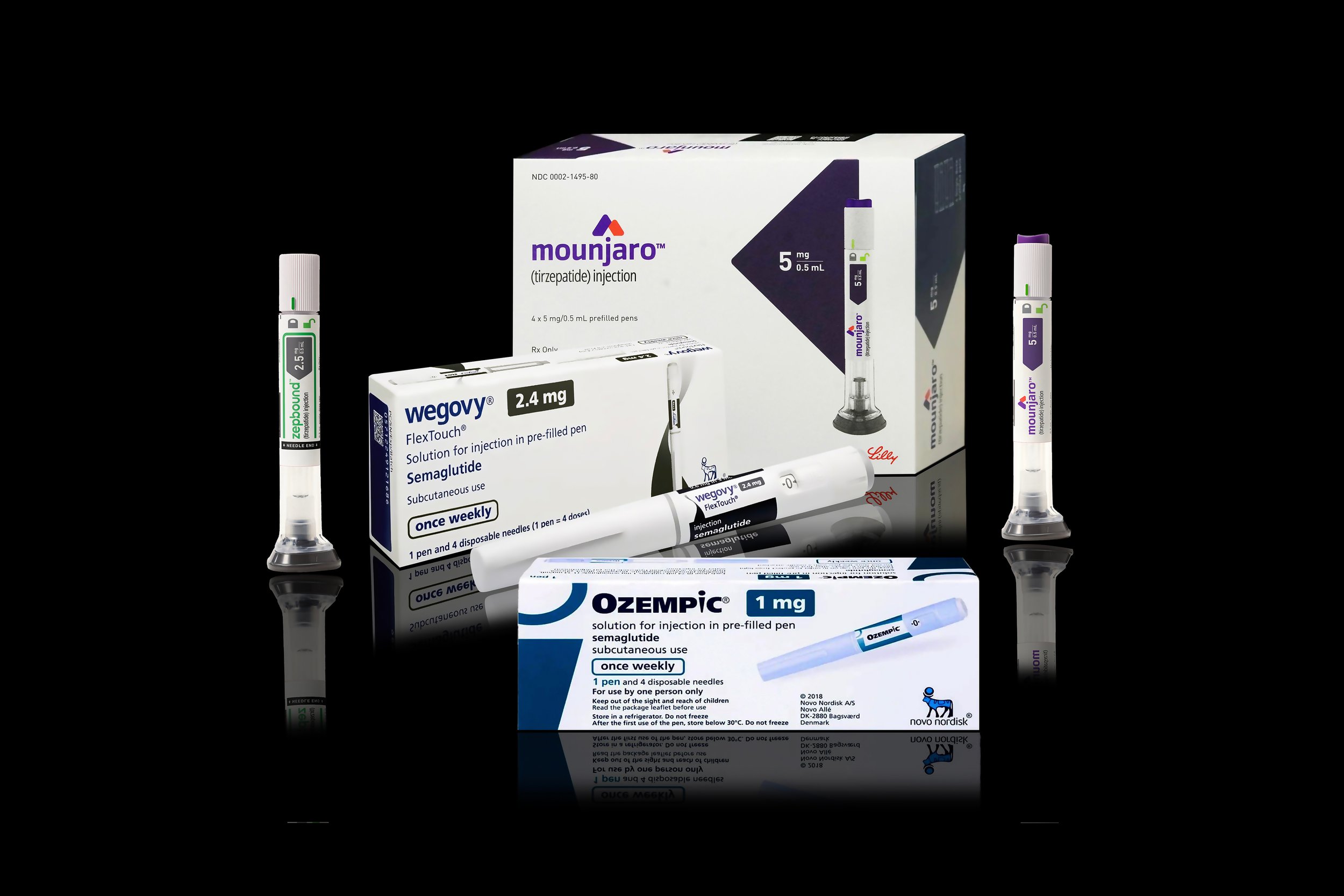Ozempic will change the world?
Maybe, or maybe not …
but the prospect of easier and more widespread use with oral agents, reduced costs and potential government funding means that the use of GLP- 1 agonists such as Wegovy, Ozempic and Mounjaro will continue to rise.
Will their increased use, and hence a higher incidence of patients presenting with complications, lead to any implications for eye care?
Are there ocular complications associated with their use?
At the recent European Congress on Obesity in Malaga, Southern Spain, multiple presentations underscored that novel weight‐loss therapies—such as Ozempic, Wegovy, and Mounjaro—may offer benefits extending well beyond diabetes management and weight reduction. Emerging evidence suggests that these drugs may decrease the incidence of myocardial infarction, lower the risk of certain cancers and dementia, and provide therapeutic benefits in the treatment of depression and addiction.
Moreover, these findings indicate that the impact of these medications could extend to fundamentally altering our approach to nutrition and health management. They may, in effect, presage a broader revolution in public health and clinical practice, redefining our understanding of the relationship between diet and overall health.
The potential consequences of this paradigm shift are considerable. As these drugs gain traction, the ripple effects may influence diverse sectors—from consumer behaviour in food and drink industries to broader economic implications, such as changes in energy consumption patterns in transportation.
Whilst, on the one hand, there may be a reduction in demand for some healthcare services if the population health improves, on the other hand will there be any impact on eye care services from an uptick in complications?
Rapid control of blood sugar is known to potentially result in accelerated diabetic retinopathy .
Using semaglutide in people with diabetes seems to be linked with a higher chance of developing non-arteritic anterior ischemic optic neuropathy (NAION) compared to other diabetes medications.
-
The SUSTAIN 6 trial—a cardiovascular outcomes study for semaglutide—demonstrated that the drug significantly reduced major cardiovascular events and renal complications in patients with type 2 diabetes. In this trial, patients receiving semaglutide experienced about a 26% reduction in cardiovascular events compared with placebo, and there was a notably lower incidence of new or worsening nephropathy. The benefits in these macrovascular and renal endpoints are attributed to semaglutide’s ability to improve glycemic control, promote modest weight loss, and favorably influence other metabolic parameters.
However, SUSTAIN 6 also revealed an unexpected increase in diabetic retinopathy complications among patients treated with semaglutide. This phenomenon is thought to be linked to the rapid improvement in blood glucose levels that semaglutide induces—a scenario similar to what has been observed with intensive insulin therapy. Such rapid glycemic drops can transiently exacerbate pre-existing diabetic retinopathy, leading to an apparent worsening of retinal outcomes.
A key reason why these retinal changes were not observed in SUSTAIN trials 1 through 5 lies in the differences in study design and patient selection. In SUSTAIN 1–5, patients with significant pre-existing diabetic retinopathy were generally excluded, and there were stricter thresholds for baseline glycemic control (often capping HbA₁c at around 10%–10.5%). This meant that the population in those trials was at a lower inherent risk for experiencing sudden shifts in retinal status. In contrast, SUSTAIN 6 did not impose such exclusion criteria related to diabetic retinopathy and allowed enrollment of patients with higher baseline HbA₁c levels. Consequently, the more vulnerable patient population in SUSTAIN 6 was more likely to experience early worsening of retinopathy as a result of a rapid improvement in glycemic control.
Semaglutide, reduction in glycated haemoglobin and the risk of diabetic retinopathy - PubMed
-
Using semaglutide for diabetes seems to come with a higher risk of developing non-arteritic ischemic optic neuropathy (NAION) compared to other diabetes medications.
Researchers looked at health records from 2019 to 2023 to see if diabetic patients taking semaglutide were more likely to get NAION. They studied over 170,000 people on semaglutide (most around 58 years old, and about half were women) and compared them with an equal number of people on other diabetes meds like metformin and sulfonylureas. They tracked was whether someone was diagnosed with NAION after starting their medication. Follow-up lasted anywhere from 1 month to 4 years.
Those on semaglutide had more cases of NAION, with the risk really starting to show up after two years. The numbers stayed high at the 3-year and 4-year marks too. When they looked closer, the risk was even more noticeable in women, people aged 40 to 64, White patients, and those with high blood pressure compared to people on other diabetes medications.
The study suggests semaglutide might come with a higher risk in some individuals of NAION, which can seriously affect vision.
Suggestions:
Baseline eye exams: Patients should have had a recent comprehensive eye exam before starting GLP-1 agonists, especially if they already have diabetic retinopathy.
Regular monitoring: Frequent follow-ups with the optometrist can help catch any early signs of worsening eye health.
Seeking optometry or ophthalmology advice promptly if any reduction in vision
Gradual blood sugar control: Avoiding sudden drops in blood glucose may help reduce the risk of diabetic retinopathy progression.
Alternative medications in high risk patients: Some experts suggest comparing GLP-1 agonists with other second-line diabetes treatments, like SGLT2 inhibitors, to better understand their impact on eye health.
Update on Semaglutide Risks - American Academy of Ophthalmology
GLP-1/GIP Receptor Agonists and Diabetic Retinopathy: What ODs Should Know
